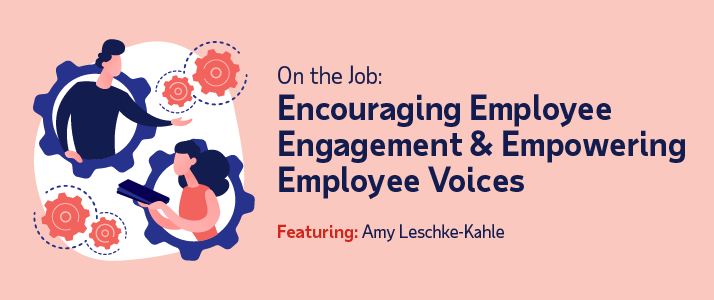The "Do's" and "Don'ts" of Employee Engagement

In this "On the Job" segment, Amy Leschke-Kahle, vice president of performance acceleration at the Marcus Buckingham company, an ADP company, chats with Cheddar News about the do's and don'ts of employee engagement practices.
Employers are investing more in employee engagement to improve retention. However, for many organizations, this investment translates into complicated engagement reports based on lengthy surveys, which often result in large scale programs with limited impact. While measuring employee engagement is important, it's only the first step towards improvement.
Speaking with Cheddar News, above, Amy Leschke-Kahle (ALK) busts some myths about employee engagement and how to impact it.
Q: What is employee engagement and why is it so important for any organization?
ALK: It's such a great question and it seems almost like a silly question, right? What is employee engagement? Like, don't we all know? When we talk about employee engagement, it's important to be clear. What I'm talking about is the emotional precursors to extraordinary work. As we think about employee engagement, we're not talking about happiness or employee satisfaction. Those things are all fine, by the way. But we're talking about the emotional precursors, the experiences that employees need to have to be most likely to deliver extraordinary contributions to the company they work for.
Q: What are the do's and don'ts for organizations when they want to make sure that they're measuring engagement in a proper way?
ALK: Well, you know, we've always thought about engagement as a measurement, as a target or a metric that organizations are trying to meet. And employee engagement is really about the experience. It's less of an event, and more about how our employees are experiencing work. So, as we think about engagement, and why is it important, and how do we measure it … we want to flip it upside down and think about the experience that we're creating. Yes, we absolutely want to measure it, and we want to measure it more simply. And we want to measure it much more frequently, because experiences happen every day, not just once a year.
And we also want to make sure that we're thinking about engagement where it happens. Engagement doesn't happen at an organization level. Yes, there's influences certainly from top down, but engagement – the local construct – happens where we work. So, we want to measure engagement locally. We want to do it much more frequently. And we want to make it really, really "light touch" so that our employees don't get fatigued by answering 100 questions.
Q: What are the effective strategies to encourage and of course improve engagement?
ALK: I'm going to kind of break the break the mold here or bust the myth, if you will. Historically, traditionally, most organizations measure engagement once a year with a whole bunch of items. And then they do things like focus groups, and maybe they have action planning … and they go through these lengthy, very formal processes.
If you think about what I just said about engagement being a local construct, we therefore also need the actions to be local. And what we have learned through our research and working with our clients is the most powerful thing that can happen is team leaders paying attention to their team members, and doing that really, really frequently. In fact, team leaders who pay frequent attention to their team members, at least weekly, and do that intentionally by asking three simple questions: What are your priorities this week? How can I help? And how are you feeling? … Those team members are more than twice as likely to be fully engaged or all-in at work.
So, the secret sauce to employee engagement is not a big plan. It's not action planning. It's not newsletters. It's not any of those things that we have classically traditionally done. It's creating a culture of high attention.
Q: So, a little bit more of that personal engagement; is that the measurement here?
ALK: Absolutely. I mean, just think about your own world, right? We all want attention from our most important people, whether that be at home or at work. And at work that tends to be our team leader. Just pay attention to me!
Q: How do you keep remote workers engaged?
ALK: Well, it's the exact same thing. It's kind of a bit of a surprise. The pandemic has really given us an opportunity, certainly as researchers, but also just as employees … to learn what does it feel like to work remotely or off site or even hybrid. And how does that feel when you're on site and some people are off site? The data is really clear. In fact, it's almost surprisingly clear that it all comes back again to attention between the team leader and the team member. There are other things that we should do, don't get me wrong. Attention's not the only thing; but it's the most important thing that we have found.
Q: Do you think it's the pandemic that made us change this mentality of forming that relationship with our employer? Or, has this always been the way to gain the engagement from an employee?
ALK: No, it's always been this way; this is nothing new. We saw it pre pandemic, we've seen it during the pandemic, and we continue to see it now. So, it really doesn't make a difference about where you sit, the kind of work that you do, or where someone sits in the hierarchy of an organization. It really boils down to attention, attention, attention.
Learn more
In the post-pandemic world of work, the organizations that prioritize people first will rise to the top. Find out how to make HR more personalized to adapt to today's changing talent landscape. Get our guide: Work is personal



